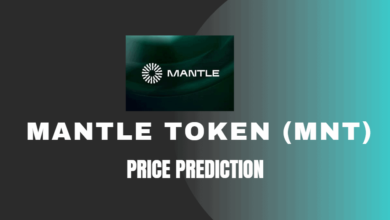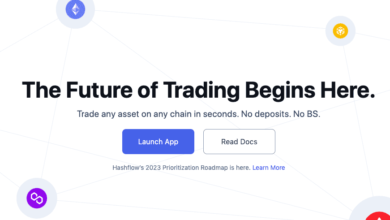What is Rocket Pool? RPL Price Prediction 2025, 2026 to 2030
Rocket Pool stands as a revolution in the world of Ethereum staking, offering a robust and decentralized platform that breaks down barriers of entry and caters to diverse stakers. This article will unpack what exactly Rocket Pool is, how it is disrupting traditional Ethereum staking, and its unique value proposition in the crypto space. More importantly, it will delve into the price forecast of Rocket Pool’s native token, $RPL, from 2025 to 2030.
In this article, we will explore the key factors influencing its future trajectory, including market trends, technological advancements, and broader crypto adoption. Let’s journey together into the future of Ethereum staking and the potential of $RPL as a prominent player in this evolving narrative.
What is Rocket Pool?
Rocket Pool is a decentralized protocol built on Ethereum that enables individuals to stake their ETH (Ethereum) in a trustless, community-owned network. It was designed to address the need for individuals who either don’t have the technical skill to run a validator node or don’t possess the minimum 32 ETH required for staking in Ethereum 2.0.
There are two main ways to participate in Rocket Pool:
Tokenized Staking
Users can stake their ETH (as little as 0.01 ETH) and in return receive rETH tokens, which represent their staked ETH plus earned rewards. rETH can be used just like ETH in the Ethereum ecosystem. The value of rETH increases over time relative to ETH as more rewards are generated by the protocol.
Running a Node
Users with more than 16 ETH and technical know-how can run a node in the Rocket Pool network. These users receive additional rewards for providing this service.
About Rocket Pool – $RPL token
As of 30th April 2025, RPL token is trading at $4.38.
| Statistic | Value |
|---|---|
| Current Price | $4.38 |
| Market Cap | $93,383,719 |
| Fully Diluted Market Cap | $93,383,719 |
| Circulating Supply | 21,304,786 RPL |
| Total Supply | 21,304,786 RPL |
How is Rocket Pool different from any other ETH staking platforms?
Rocket Pool was created with the principles of decentralization at its core. The protocol operates without a central authority, meaning no single entity has control over the network. This aligns it with the broader ethos of Ethereum and decentralized finance (DeFi) which emphasizes open, permissionless, and trustless systems.
Rocket Pool’s mission is to provide a decentralized and trustless Ethereum 2.0 staking solution. It aims to cater to all types of Ethereum holders, allowing anyone to participate in staking, from those who want to run their own nodes to those who simply wish to stake their ETH. The aim is to lower the barriers to entry in Ethereum staking, especially the requirement to hold 32 ETH and the technical skills needed to run a node.
RPL token Onchain Analysis
The on-chain data for Rocket Pool (RPL) reveals some intriguing dynamics and highlights the strength of the platform.
With a current RPL price of $4.38 and a market cap of $93,383,719, the token has seen significant growth since its all-time low in August 2018 at $0.009, even though it’s currently well below its all-time high from April 2023 of $61.9.
The total value locked (TVL) of RPL is Stands at $1.264 Billion
This wide distribution provides plenty of opportunities for trading and increases accessibility for potential investors, thereby painting a positive picture for the future of Rocket Pool.
Note: This on-chain analysis was last updated on the 30th of April 2025 and value may change with time.
How to buy $RPL token?
Rocket Pool $RPL token can be purchased from crypto exchanges like Binance, Coinbase, Uniswap.
RPL Price Prediction 2025
RPL Price Prediction 2026
| When | Maximum Price | Minimum Price |
| January 2026 | $21.632 | $17.445 |
| February 2026 | $15.452 | $11.037 |
| March 2026 | $11.886 | $9.585 |
| April 2026 | $8.804 | $6.289 |
| May 2026 | $6.289 | $5.072 |
| June 2026 | $7.547 | $5.390 |
| July 2026 | $6.237 | $5.030 |
| August 2026 | $5.670 | $4.050 |
| September 2026 | $4.536 | $3.658 |
| October 2026 | $5.874 | $4.122 |
| November 2026 | $6.237 | $5.030 |
| December 2026 | $5.569 | $3.978 |
In January 2026, RPL is expected to reach a maximum price of $21.632 while maintaining a minimum price of $17.445. By December 2026, RPL is anticipated to have a maximum price of $5.569 and a minimum price of $3.978.
RPL Price Prediction 2027
| When | Maximum Price | Minimum Price |
| January 2027 | $6.126 | $4.940 |
| February 2027 | $7.351 | $5.250 |
| March 2027 | $6.682 | $5.389 |
| April 2027 | $7.775 | $5.321 |
| May 2027 | $8.086 | $6.521 |
| June 2027 | $6.220 | $4.443 |
| July 2027 | $4.976 | $4.013 |
| August 2027 | $3.857 | $2.755 |
| September 2027 | $4.822 | $3.888 |
| October 2027 | $6.027 | $4.305 |
| November 2027 | $6.630 | $5.346 |
| December 2027 | $7.425 | $5.304 |
RPL Price Prediction 2028 to 2030
FAQs
How does Rocket Pool provide liquidity for its users?
When a user deposits ETH into Rocket Pool, they instantly receive an equivalent amount of rETH, a token that represents their staked deposit and the rewards it earns over time. This rETH token can be traded, sold, or held at any time, thus providing liquidity to the users, which is especially important during the early phases of Ethereum 2.0 rollout when staked ETH is locked.
What are the key components of the Rocket Pool protocol?
The Rocket Pool protocol primarily consists of smart contracts, the Smart Node Network, and Minipool Validators. The smart contracts handle ETH deposits, assign them to node operators, and manage tokens. The Smart Node Network is a decentralized network of Ethereum nodes running Rocket Pool’s software. Minipool Validators are smart contracts created by node operators, which accept deposits from users and, when filled with a total of 32 ETH, create a new validator on the node.
Who can become a node operator in Rocket Pool and what are the benefits?
Any user can become a node operator in Rocket Pool if they can stake a minimum of 16 ETH. The node operators can stake their ETH fee-free and also receive additional rewards from the network on top of the rewards earned from their own staking. They also earn RPL tokens in return for initially putting up RPL as collateral, which serves as insurance against poor node performance.
What is the role of the RPL token in the Rocket Pool ecosystem?
RPL is the primary protocol token of Rocket Pool. It is used in the governance of the protocol and can be staked on a Rocket Pool node as a form of insurance or collateral. The more RPL a node operator stakes as insurance, the more RPL rewards they receive from the protocol.
What is RPL price prediction for 2025?
In 2025, Rocketpool tokens are expected to trade within a range of $3.937 to $17.306, according to price predictions.
What is RPL’s price prediction for 2030?
In 2030, the projected RPL price suggests that RPL tokens could trade between $11.938 to $22.494.
Conclusion: Should you invest in RPL tokens in 2025?
Rocket Pool is one of the top Ethereum staking platforms, after Lido with a current marketcap of $93,383,719. RPL is priced at the time of writing is $4.38.
The on-chain data further substantiates this potential. With a Total Value Locked (TVL) of $1.264 billion, the platform showcases substantial user confidence. The fact that the daily active users have grown by 65.9% indicates an increasing adoption rate, a trend that is likely to continue given the platform’s unique value proposition. Additionally, the platform’s distributed liquidity across various exchanges indicates its wide accessibility for potential investors.
From a fundamental perspective, Rocket Pool’s inherent functionality aligns well with the rising demand for Ethereum staking solutions, especially after the Ethereum 2.0 upgrade. As the ETH price continues its upward trajectory, Rocket Pool’s potential profitability looks promising.
RPL also acts as an insurance mechanism for node operators, incentivizing good behavior and adding a layer of security to the protocol. With the anticipated mass adoption of ETH in the future, the demand for user-friendly staking platforms like Rocket Pool is likely to surge, potentially increasing the value of RPL.
In conclusion, Rocket Pool presents a strong investment opportunity in February 2025. Its solid fundamentals, combined with positive on-chain metrics and a forward-looking position in the Ethereum ecosystem, make RPL a token worth considering for portfolio diversification and potential long-term growth.
However, none of what we have mentioned in this article – RPL price prediction by 2025 to 2030 is financial advice. Please consult a financial advisor before investing in RPL or any other cryptocurrency. This post is just meant for education.



